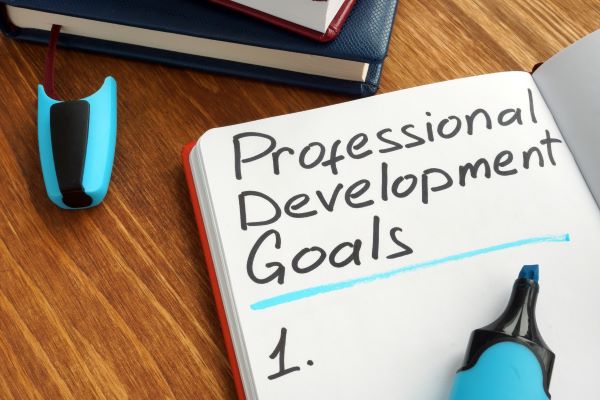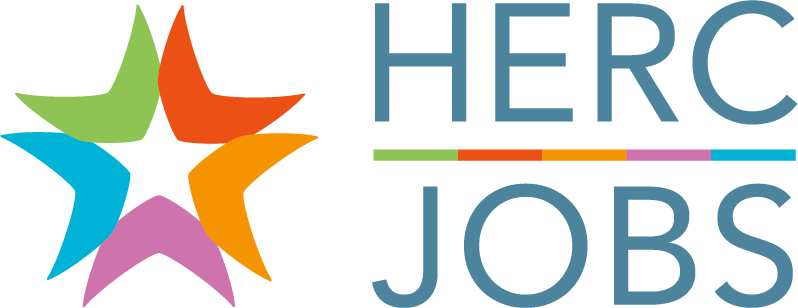What is Professional Development: A Three-Part Framework

Professional development sometimes seems like another higher education buzzword with a vague definition and even more vague mandate. The Glossary of Education Reform defines professional development in the context of education as, “a wide variety of specialized training, formal education, or advanced professional learning intended to help administrators, teachers, and other educators improve their professional knowledge, competence, skill, and effectiveness.” (See also, the definition for “vague”). I define professional development as, “any activity that is part of a contentious and strategic effort to improve professional skills and competencies.” A shorter definition by far but still vague.
The audience for professional development is also vague, since it includes anyone who takes steps to advance their career.
Ambiguity can be incredibly frustrating for developing a plan. It can also be an incredible opportunity for personalization, especially when used in conjunction with a framework to focus goals. Here is a suggested framework that divides professional development in higher education into three broad areas of focus: the basics of professionalism, improving current weaknesses, and planning for the future.
Level Up the Basics
The basics of professionalism are the essential competencies necessary for success in any career. Their breadth of application sets them apart from skills and techniques, which are field or position-specific. The National Association of Colleges and Employers (NACE) lists eight core competencies that college students should attain for “a successful transition into the workplace.” Among these are communication, teamwork, problem-solving, and, ironically, career management, which includes the ability to “identify areas necessary for professional growth.”
Competencies require intentional use and improvement, and combined with their universal relevance, is why they are the first area of focus in professional development. Communication is one particular area that is commonly overlooked as a target of professional development. The requirement for communication as a part of the human experience can hide it as a key focus of professional development. But clear, accurate language is essential for communicating ideas, whether written or verbal. Fortunately, there are many avenues to improve the communication competency. For instance, many colleges and universities have on campus writing services and there is often room in budgets for editorial services to receive project-specific feedback.
A recent addition to the NACE competency list is global or intercultural fluency, which is when “the individual demonstrates openness, inclusiveness, sensitivity, and the ability to interact respectfully with all people and understand individuals’ differences.” As higher education becomes more accessible to groups that have been historically excluded, it is important to constantly update our information and understanding, whether by learning about microaggressions or identifying the structural (and literal) barriers in a program. Fortunately, colleges and universities are increasing the availability of diversity, equity, and inclusion (DEI or EDI) workshops and trainings. Another avenue is to explore the history of marginalized groups in your profession, field, and/or department. Comparing the history of these groups to ongoing initiatives and programs can contribute to further development of intercultural fluency and sometimes improve execution and performance of a current project.
Bolster Current Weaknesses
Improving current weaknesses is the second area of focus for professional development. While it may seem obvious to some, the surest way to advancement is to get a good recommendation from a current supervisor. Look to feedback from supervisor(s), colleagues, and annual evaluations to identify areas of potential improvement. Since broad categories like communication and teamwork fits in the “basics” category, focus on individual skills and techniques here. Perhaps there are particular tasks that you perform more slowly than you would like or receive less than stellar feedback on.
In either case, first do some background on the skill, technique, or task. Learn more about what it needs to communicate, why it is important, and how it has been done in the past. Use this information to inform the next attempt, and consider volunteering more often to further stretch skill development. If this approach does not yield the desired results, consider looking into formal training methods like continuing education courses and workshops. I consider setting aside time to identify and improve areas of weakness as a crucial part of professional development because positive changes in job performance will get noticed by supervisors. Gaining the confidence of a supervisor encourages them to provide good references and potentially sponsor you for more opportunities.
Plan for the Future
The third area in the professional development framework is planning for the future. This requires intimate and strategic knowledge of both career goals and the skills required to attain them. Those unsure about where they want to go next can employ networking and informational interviews to learn more about potential careers. Even those who do know what their next steps are can use informational interviews to identify silent or hidden skill sets to develop. Consider searching job ad boards for positions that are a logical next step and identify common themes in skills and/or knowledge that you can use to target appropriate professional development activities.
There are many potential opportunities in higher education to develop professional skills for your future. For instance, coding is an increasingly common job requirement. Identify a campus department or program that specializes in the area of coding necessary for your next step. If experience in python for data analysis is necessary, look for seminars and events in groups that study microbiome, public health, or economics. On the other hand, computer science departments and programs may be more appropriate to learn about data storage and infrastructure or webpage maintenance. There is also an abundance of online resources (such as Udacity, Udemy, MasterClass, Coursera, EdX, Codecademy, and more), apps (e.g., skill-specific apps like Duolingo, Mimo, Hacker X, Babble), and podcasts that are now available thanks to COVID-19. Finally, be alert for opportunities to launch or participate in projects that will develop both your professional skill set and resume.
Conclusion
Many employers directly support professional development with funds or credit for continuing education programs. But even if that isn’t available, higher education is offering more professional development programming for graduate students and postdoctoral scholars that are frequently open to staff as well. Even if a supervisor is hesitant, framing professional development as a tool to improve work outcomes and productivity may help earn their support. Of course, too much time on professional development could have the opposite effect of reducing productivity, so be strategic and time conscious when selecting professional development activities.
One recommendation for early-stage professionals (graduate students and postdocs) is to allot 15 percent of working hours to professional development like that described here. That equates to 300 hours in a 50-week work year, or six hours per week on average. Regardless of when it happens, professional development is required for effective and strategic career progression. The three-part framework (basic competencies, current weaknesses, and planning for the future) can help guide professional development to ensure that it meets your needs as a professional.
About the Author: Dr. Ada Hagan is a microbiologist with a passion for making science accessible. In 2019, Dr. Hagan founded Alliance SciComm & Consulting, LLC as a means to use her strong background in communications and higher education to help make scientific concepts more easily understood and make the academy more inclusive to future scientists from all backgrounds. Her writing and research have been featured by BBC Radio 4, Science Careers, The Scientist, Massive Science, and the American Society for Microbiology.
